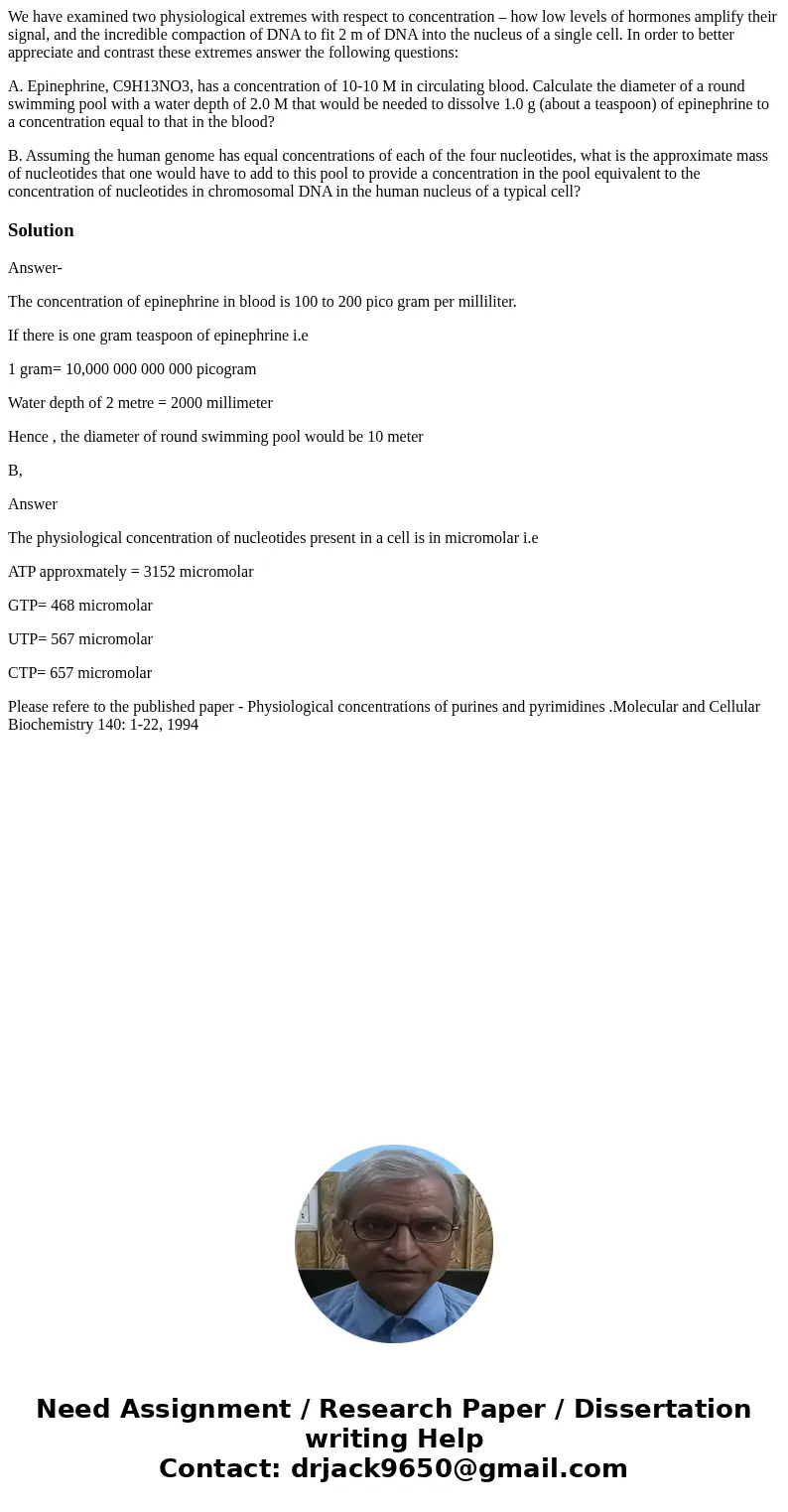We have examined two physiological extremes with respect to
We have examined two physiological extremes with respect to concentration – how low levels of hormones amplify their signal, and the incredible compaction of DNA to fit 2 m of DNA into the nucleus of a single cell. In order to better appreciate and contrast these extremes answer the following questions:
A. Epinephrine, C9H13NO3, has a concentration of 10-10 M in circulating blood. Calculate the diameter of a round swimming pool with a water depth of 2.0 M that would be needed to dissolve 1.0 g (about a teaspoon) of epinephrine to a concentration equal to that in the blood?
B. Assuming the human genome has equal concentrations of each of the four nucleotides, what is the approximate mass of nucleotides that one would have to add to this pool to provide a concentration in the pool equivalent to the concentration of nucleotides in chromosomal DNA in the human nucleus of a typical cell?
Solution
Answer-
The concentration of epinephrine in blood is 100 to 200 pico gram per milliliter.
If there is one gram teaspoon of epinephrine i.e
1 gram= 10,000 000 000 000 picogram
Water depth of 2 metre = 2000 millimeter
Hence , the diameter of round swimming pool would be 10 meter
B,
Answer
The physiological concentration of nucleotides present in a cell is in micromolar i.e
ATP approxmately = 3152 micromolar
GTP= 468 micromolar
UTP= 567 micromolar
CTP= 657 micromolar
Please refere to the published paper - Physiological concentrations of purines and pyrimidines .Molecular and Cellular Biochemistry 140: 1-22, 1994

 Homework Sourse
Homework Sourse